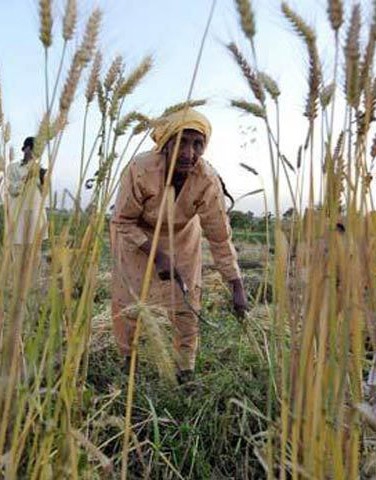
AGRICULTURE contributes 22.67 per cent to the country’s gross domestic product (GDP) and accounts for 38pc of the total employment. Unfortunately, the per unit production is pretty low and there are several reasons for it. They include lack of ownership, distance from modern technological advancements, absence of a research and development culture, low investment, harsh credit terms, and insufficient training facilities for relevant stakeholders, including farmers.
The low yield is damaging the overall sector, but that is only one aspect of the scenario. Low yield turns into food shortage, which means escalating prices of food items, and lack of competitive edge in the exports market. We have already seen that the prices of everyday essentials have gone beyond the purchasing capacity of most consumers, and our exports have taken a nosedive as well. By focussing on the agriculture sector, we may hope to fix the consequences as well.
The development strategy needs to be upgraded by fixing national production targets of agriculture, livestock, fisheries and forestry. For this purpose, a committee of technocrats must be set up. It should comprise technical experts as well as academia who should be given the mandate of boosting exports.
In the first phase, two important agrarian crops, wheat and cotton, two livestock products, milk and beef, and two entities from the fisheries subsector, shrimps in marine water and rohu (Labeo Rohita) in freshwater, must be focussed upon. There should be tree plantation and range land development in forestry.
We need to increase fertility of soil, and have profile mentioning deficiency of minerals, treating them at the level of union councils (UCs). The availability of agricultural machinery for developing the land at subsidised rates should be ensured along with timely provision of high-quality seeds.
Apart from irrigation water, there should be assessment of quality of fertiliser, pesticide, herbicide and insecticide. A functional testing laboratory to control adulteration is also required, and the middleman should be avoided by designing market channels for the sale of agricultural produce.
We must develop irrigated and peri-urban areas for milk production and maintain the presence of high yielding buffaloes and cattle in a 3:2 ratio at dairy farms. We need only high-quality breeding bulls of elite dams at a young age of 18-20 months from well-known areas and progressive farmers. These should be kept on adequate nourishment for about 4-6 months before being supplied to the farmers free of charge for breeding purposes.
There should be arid and semi-arid areas especially earmarked for beef production. Suitable, large-sized, early mature, and fast growing cattle in the area should be raised, providing them proper breeding, management, nutrition, quality water and disease control facilities. Breeds and areas of interest would include Tharparkar and Kankrej in Sindh, Cholistani and Dajal in Punjab, Bhagnari in Balochistan, and Dhani and Lohani breeds in Khyber Pakhtunkhwa.
Only male cattle aged about 18 months, kept on fattening ration for 3-4 months, should be meant for beef supplies. There should be redesigning of the selling system of beef animals on weighing basis so that farmers fatten their animals to fetch a good amount. Farmers may be provided credit on easy terms.
The coastal belts in Sindh and Balochistan should be developed by more than a 1,000km to increase the production of large-sized shrimps. Two shrimp hatcheries at Hawke’s Bay in Karachi are dysfunctional because of the unavailability of seed and feed.
A shrimp hatchery requires marine water, sweetwater, seed and feed. These should be well-built and well-equipped along with technical staff. There is abundance of land available for shrimp farming in the coastal areas.
These hatcheries can be made functional by expertise from regional countries, including Bangladesh and Thailand, for at least two years through some international assistance agency. This should be done to train the local staff in management and production of seed and feed and in other areas of hatchery.
If we are able to start shrimp hatchery, shrimp farming will follow. Resultantly, the export of shrimps will generate the highly sought foreign reserves. To increase the production of rohu, more well-equipped freshwater hatcheries are to be established. The farmers need to be trained in all areas of fish farming, and provided fishing gear at subsidised rates.
In forestry, more trees are to be planted. Range land is to be developed. Additionally, mangrove saplings are to be planted in coastal areas. In order to achieve the desired production targets, on-farm trainings may be commenced through modern audio-visual equipment. This will help increase the production of wheat, cotton, ilk, beef, shrimps and rohu fish. Additionally, it will help us tackle the climate change phenomenon.
Dr Baz Muhammad Junejo
Ex-Secretary, Livestock & Fisheries, Sindh
Hyderabad
Published in Dawn, May 19th, 2023











































Dear visitor, the comments section is undergoing an overhaul and will return soon.